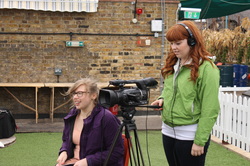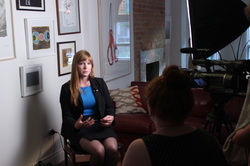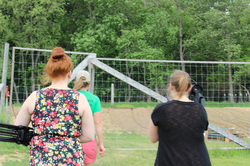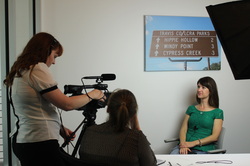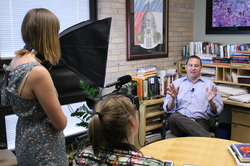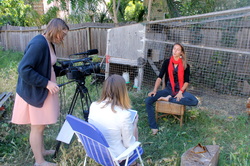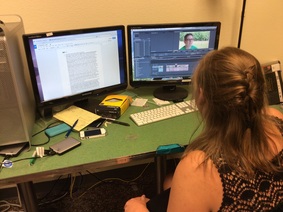
September 29,2014
The Premiere is Near
By Taylor Lunka
The “Waste Not” team has been busy in recent weeks editing, acquiring additional footage and performing other post-production tasks to assemble the film, the twelfth MediaLab documentary in the organization’s eight year existence.
“Waste Not” began as a somewhat abstract vision that has increasingly gained focus and changed our lives.
Before this project, food is something my colleagues and I all took for granted. But now, we each think deeply about food – including what we eat, how we eat, and how food is, or often is not, valued by society. None of us will ever look food in the same way.
Preliminary conversations about what has since become “Waste Not” began more than a year ago. At the time, Fall 2014 seemed so far away. It’s hard to believe that in about a month, we will finally premiere the project.
From the performance of initial research, to field production throughout the Northwest, across North America, and then abroad to Greater London, all of which has been followed by editing and post-production, there has been no time for rest. However, the hard work has been worth every moment.
We believe you will see “Waste Not” as more than just another documentary. We predict it will change your perspectives about food and your relationship with it. And we hope the film will motivate average citizens to develop strategies to address food waste and its many implications.
“All of us have a role to play,” says Emma Marsh, community partnership manager for the United Kingdom’s Waste Resource Action Programme (WRAP), “if only we work together.”
We look forward to seeing you at 3 p.m., Saturday, Nov., 8, 2014, at the premiere of “Waste Not: Breaking Down the Food Equation,” which will screen at the Theatre on the Square at the Broadway Center for the Performing Arts, 901 Broadway in downtown Tacoma, Wash.
The Premiere is Near
By Taylor Lunka
The “Waste Not” team has been busy in recent weeks editing, acquiring additional footage and performing other post-production tasks to assemble the film, the twelfth MediaLab documentary in the organization’s eight year existence.
“Waste Not” began as a somewhat abstract vision that has increasingly gained focus and changed our lives.
Before this project, food is something my colleagues and I all took for granted. But now, we each think deeply about food – including what we eat, how we eat, and how food is, or often is not, valued by society. None of us will ever look food in the same way.
Preliminary conversations about what has since become “Waste Not” began more than a year ago. At the time, Fall 2014 seemed so far away. It’s hard to believe that in about a month, we will finally premiere the project.
From the performance of initial research, to field production throughout the Northwest, across North America, and then abroad to Greater London, all of which has been followed by editing and post-production, there has been no time for rest. However, the hard work has been worth every moment.
We believe you will see “Waste Not” as more than just another documentary. We predict it will change your perspectives about food and your relationship with it. And we hope the film will motivate average citizens to develop strategies to address food waste and its many implications.
“All of us have a role to play,” says Emma Marsh, community partnership manager for the United Kingdom’s Waste Resource Action Programme (WRAP), “if only we work together.”
We look forward to seeing you at 3 p.m., Saturday, Nov., 8, 2014, at the premiere of “Waste Not: Breaking Down the Food Equation,” which will screen at the Theatre on the Square at the Broadway Center for the Performing Arts, 901 Broadway in downtown Tacoma, Wash.

